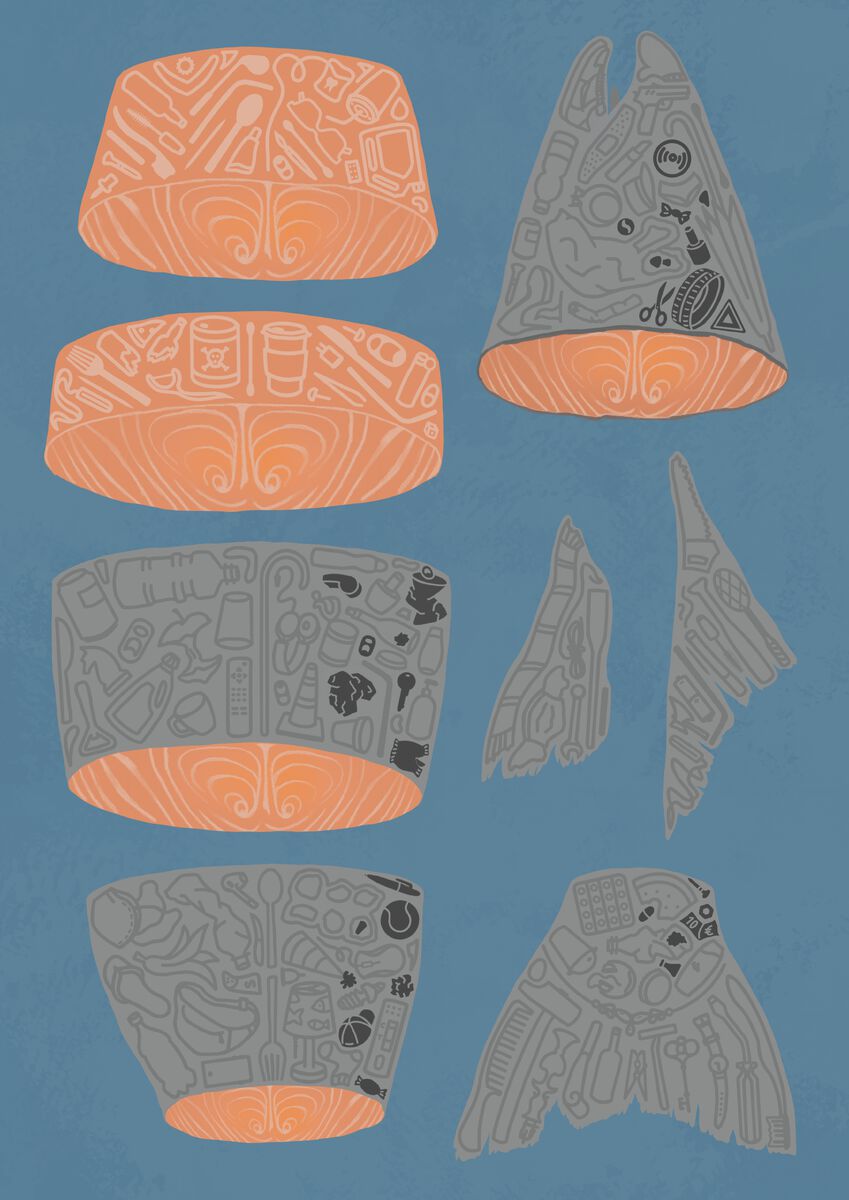Food Chain
Plastic is omnipresent in our lives, and also therefore in the oceans. It does not decompose but rather degrades into very small particles, which are in turn mistaken for food and eaten by many animals. From zooplankton to invertebrates to fish and birds and mammals, microplastics can be found everywhere in the food chain or food web. They are either consumed directly, or indirectly, through the consumption of contaminated organisms, known as trophic transfer—a process affecting not only marine animals, but also humans. For a long time it was believed that these particles would just pass through the digestive system without doing harm, but microplastics have proven to adsorb chemical pollutants like insecticides, PCBs, antibiotics, and heavy metals. They can enter the circulatory and lymphatic system and be stored in fatty tissues, leading to a range of serious health problems. Ironically, the largest share of plastic consumption is used for packaging material. Thus, what was supposed to envelop and protect our food in the end permeates and contaminates it.
Sources: Cverenkárová, K.et al., “Microplastics in the Food Chain”,. Life, vol. 11, issue. 1349, (2011).
Lehel, József and Sadhbh Murphy, “Microplastics in the Food Chain: Food Safety and Environmental Aspects”, Reviews of Environmental Contamination and Toxicology, ed. Voogt, P, vol. 259, (2021).
